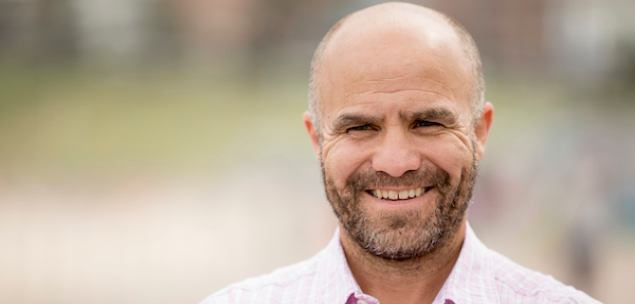Heading into 2017, STM – a Sydney-based maker of laptop bags and other tech accessories – had enjoyed three years of record growth, fuelled by strategic hires across sales, product development and marketing plus firmer support from long-term retail partners.
Not only had its revenue tripled, its global footprint had increased nearly three-fold from having products available in ten countries, to now thirty countries in the present day.
Against this backdrop, co-founders Ethan Nyholm and Adina Jacobs made the bold albeit nerve-racking decision to rebrand STM as it entered its 20th year of operation.
“A regular client didn’t recognise us”
“We felt that we had lost our voice and that our message wasn’t necessarily resonating with people. A key moment of realisation was when we gave a repeat brand presentation at CES (Consumer Electronics Show) to one of our regular clients and they didn’t seem to recognise our brand”, Nyholm, the company’s CEO, told Dynamic Business.
“Our core message of providing technical products that are stylish, durable and highly functional has remained the same since 1998, when Adina and I founded STM, and we wanted to retain it; however, we wanted to make a significant change in how that message was being communicated. The goal was to re-emphasise who we are, and what we’re about, and thus reconnect with our consumers, who’ve come to expect products that are not only functional, durable and smart but which enable them to use their devices flexibly.”
Nyholm and Jacobs resolved to revise the company’s name from STM Bags to STM Goods to better reflect businesses extensive collection of digital accessory products that extends beyond bags. They also introduced a brand new ‘spear’ logo, which was designed to signify the company’s bold ambition and resourcefulness.
“Changing the logo was scary,” Nyholm admitted. “The concern was that we would lose our loyal, long-term customers who recognised and identified with our original look. Plus, we had invested quite a bit, over the years, in protecting our intellectual property, and this included legal fees. The trademark based on our old branding had been registered in several countries and it was an expensive process to change.
“The risk of losing brand equity we had spent nearly 20 years accumulating and protecting was not something our team found it easy to accept. It was also a concern that we had just launched in some markets, but we felt that the new branding and messaging would resonate better.”
“The rebrand process was eye-opening”
To assist with the rebrand, Nyholm, Jacobs and their team sought to collaborate with a design agency.
“We felt like we were a bit stuck in our own way of thinking, so it was useful to have an external party reframe the challenge for us,” he said. “Similarly, we also brought on a new marketing manager who really highlighted how much that change was needed. He made us dig deeper into our brand by asking us what STM stood for and what mattered most to us about the company – it was an exercise that really opened our eyes and made us realise there was a strong opportunity to communicate to our customers in a fresh new way”
“We had been looking at our own business story for 17 years without being able to articulate the message in the same way our marketing manager, Tracy could.”
The rebrand process started in April 2016, concluded in January 2017 and was unveiled in Las Vegas at CES (Consumer Electronics Show) that month. To support the rebrand, STM followed it up with the launch of its Power range of portable charge devices and the Streets collection, a four-piece collection of accessories designed for the young entrepreneur.
“No reaction is worse than a bad reaction”
According to Nyholm, the company’s retail partners, along with users on Facebook and Twitter, provided a useful source of feedback.
“Not everyone liked the change but I do not think that is necessarily negative,” he said. “A bad reaction is at least a reaction and people have noticed! No reaction would be worse.
“Overall the new branding, logo and messaging has been really well received. The quality of the material and messaging that our marketing department is delivering is far better than what we have done in the past, which has been enabled by our fresh new look and branding.”
Moving forward, Nyholm said he, Jacobs and their team are focused on improving planning and logistics as well as internal communication.
“From an external perspective, we are going to boost our focus on marketing and communication to make sure that we do not lose our voice again, and to maintain the current momentum,” he said. “In terms of new products, there are some gaps that we think we can fill, after dabbling, and looking at other tech accessories, but we need to come to a decision about these things, and that is sort of where we are right now. An exciting place to be!”

